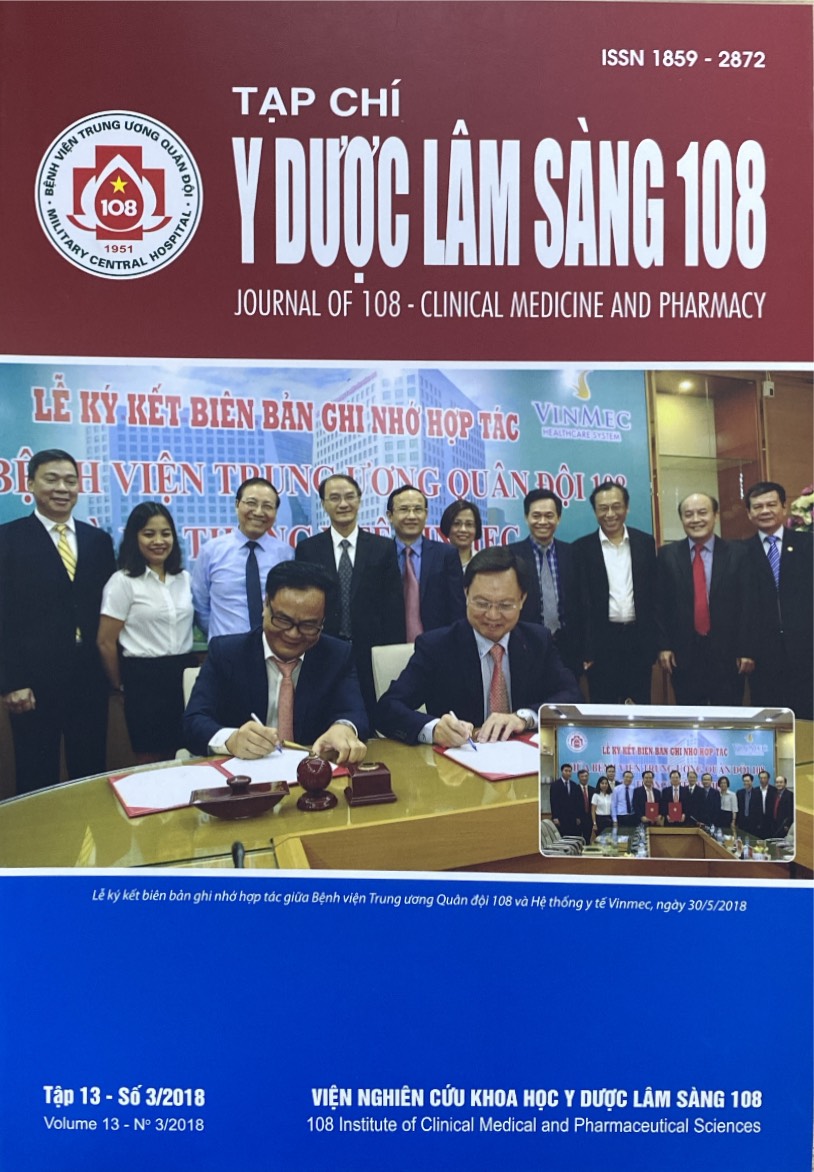Research medical history of patients with atypical bacterial pneumonia at Vietnam National Children’s Hospital in 2014
Main Article Content
Keywords
Abstract
Objective: To describe medical history report of children with atypical pneumonia due to bacteria Mycoplasma pneumoniae (M. pneumoniae); Chlamydia pneumonniae (C. pneumoniae) and Legionella pneumophila (L. pneumophila) at Vietnam National Children’s Hospital in 2014. Subject and method: It’s a descriptive study on a series of 215 cases of atypical pneumonia due to bacterial at Vietnam National Children’s Hospital. Multiplex PCR and enzyme-linked immunosorbent assay were used to to detect
M. pneumoniae, C. pneumoniae and L.pneumophila in those specimens. Result: The medical history of atypical pneumonia due to bacteria as below: Obstetric history: Small ratio have neonatal respiratory failure 1.4%, neonatal septic infection 2.33%, light weight 6.98%, birth operation 25.12%. There is difference in method of giving birth of atypical bacterial pneumonia inside and outside group (p<0.05). Nurturing and development history: Asthma 14.42%, congenital respiratory distress 0.93%, congenital defect 1.86%, nutrition 15.81%, overweight 23.26%, inadequate vaccination 4.65%, not enough breast feeding in the first 6 months 1.86%, motor delay 7.44%, mental development delay 7.44%. There is no difference in nurturing and development history between patient of atypical pneumonia in group and atypical pneumonia outside group (p>0.05). Antibiotic use history accounts for 87.91%, in which patient group of atypical pneumonia is higher than that in co-infection outside that group (p<0.05). Conclusion: Atypical bacterial pneumonia in children have a history of caesarean section, obesity accounted for 1/4 cases. It is popular that patients with atypical pneumonia are used antibiotics before admitted. There is difference in method of giving birth and using antibiotics between atypical bacterial pneumonia in group and atypical bacterial pneumonia outside group.
Article Details
References
2. Trần Anh Tuấn (2010) Một số thông điệp nhân ngày viêm phổi thế giới 12.11.2010. Bệnh viện Nhi Đồng I - TP. Hồ Chí Minh, ngày 5.11.2010.
3. Alan S (2002) Pneumonia due to viral and atypical organisms and their sequelae childhood respiratory infections. Br Med Bul l61(1): 247-262.
4. Bütün Y, Köse S, Babayiğit A, Olmez D (2005) Chlamydia and Mycoplasma serology in respiratory tract infections of children. Tuberk Toraks 54(3): 54-58.
5. Forest WA, Summersgill JT et al (2007) A Worldwide perspective of atypical pathogens in community-acquired pneumonia. American Journal of Respiratory and Critical Care Medicine 17: 1086-1093.
6. Miyashita N, Kawai Y, Akaike H et al (2012) Macrolide-resistant Mycoplasma pneumoniae in adolescents with community-acquired pneumonia. BMC Infectious Diseases 12: 126.
7. Prapphal N, Suwanjutha S, Durongkaveroj P (2006) Prevalence and clinical presentations of atypical pathogens infection in community acquired pneumonia in Thailand. J Med Assoc Thai 89(9).
8. Rudan I, Boschi-Pinto C, Biloglav Z (2008) Epidemiology and etiology of childhood pneumonia. Bull World Health Organ 86(5): 408-416.
9. Chisti MJ, Tebruegge M, La Vincente S et al (2009) Pneumonia in severely malnourished children in developing countries - mortality risk, aetiology and validity of WHO clinical signs: A systematic review. Trop Med Int Health 14(10): 1173-1189.
 ISSN: 1859 - 2872
ISSN: 1859 - 2872
